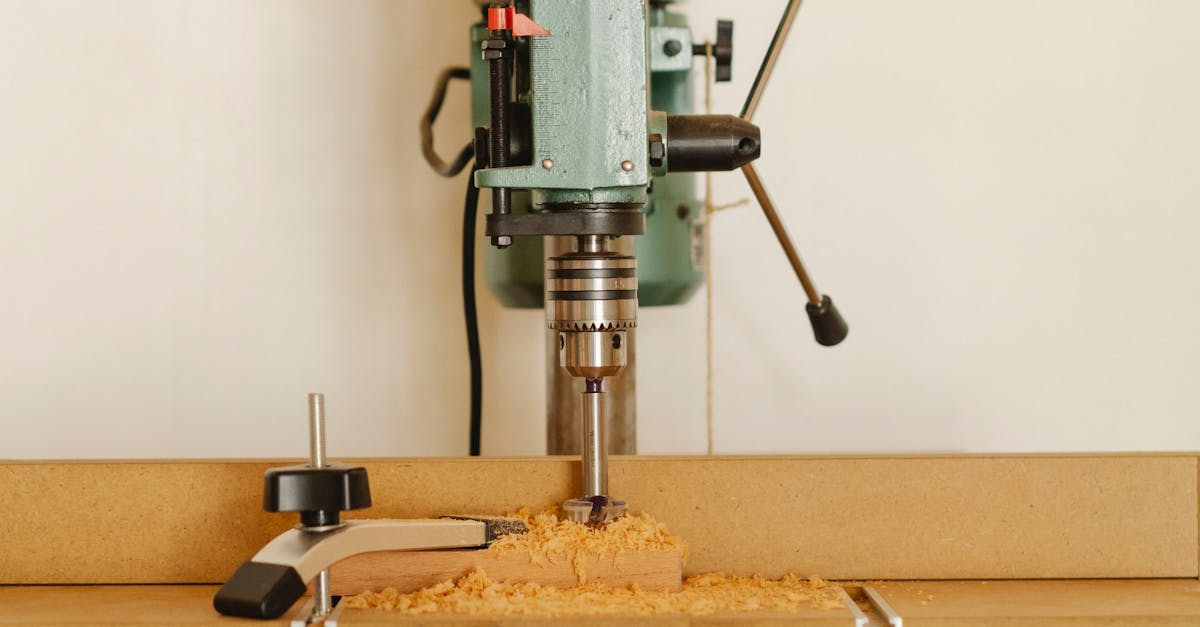
Using Non-Conductive Tools for Safer Appliance Repairs
Table Of Contents
Maintenance of Non-Conductive Tools
Regular maintenance of non-conductive tools is essential to ensure their effectiveness and safety during appliance repairs. After each use, it is advisable to inspect the tools for wear and tear, as any signs of damage can compromise their non-conductive properties. Cleaning tools thoroughly helps prevent the buildup of grease or debris, which may impair their performance. Storing them in a dry place protects against moisture and rust, extending their lifespan.
In addition to routine inspections, sharpening cutting tools is crucial for maintaining efficiency. Dulling blades or tips can lead to increased force during use, raising the risk of accidents. Applying appropriate lubricants to moving parts can also enhance performance while preventing corrosion. Establishing a maintenance schedule is beneficial; it promotes consistent care and ensures that tools remain in optimal condition for safe operations.
Ensuring Longevity and Performance
Non-conductive tools require regular care to maintain their effectiveness and safety. Cleaning them after each use is essential. Residual dust or grime can affect performance and may lead to premature wear. Storing tools in a controlled environment enhances their lifespan. Avoid exposing them to extreme temperatures or direct sunlight.
Periodic inspections help in identifying any signs of damage or degradation. Checking for cracks, chips, or other wear can prevent accidents during repairs. Using proper storage solutions, like padded cases, can also minimise the risk of impact damage. Regularly updating your inventory can ensure all tools remain compliant with safety standards, reinforcing their reliability in the long term.
Common Mistakes to Avoid
Using non-conductive tools does not guarantee safety if simple but critical mistakes are made. One common error is assuming that all non-conductive materials are equally safe. Each tool should be inspected for any wear or damage. A small crack or chip can compromise the tool's effectiveness and expose the user to danger during appliance repairs.
Another mistake individuals often make is disregarding the proper usage guidelines for each tool. Even non-conductive tools can be misused, leading to potentially hazardous situations. Ensuring that each tool is employed in its intended manner can significantly enhance safety and efficiency. Proper technique not only protects the user but also ensures that appliances are repaired correctly, reducing the likelihood of future issues.
Pitfalls in Using Non-Conductive Tools
While non-conductive tools significantly enhance safety during appliance repairs, relying solely on them can lead to complacency. Some technicians might believe that using these tools eliminates all risks, which is a dangerous mindset. It is essential to maintain awareness of the surrounding environment and potential hazards, even with non-conductive options. Misjudging the nature of certain components can lead to accidents or equipment damage.
Improper care and maintenance of these tools can also result in reduced effectiveness. Non-conductive materials require specific handling to preserve their integrity. Dings, scratches, or wear can compromise their protective properties. Technicians must remain vigilant in inspecting their tools regularly. Overlooking these aspects can not only put the technician at risk but also jeopardise the overall quality of the repair work performed.
Training and Certification
A strong foundation in training and certification is essential for anyone involved in appliance repairs. This education not only covers the technical aspects of using non-conductive tools but also highlights safety protocols and best practices. Accredited programs often include hands-on training, allowing technicians to gain practical experience. Additionally, understanding the different types of non-conductive materials ensures that repairs are carried out effectively and safely.
Pursuing certification can significantly enhance a technician's credibility and job prospects. Many employers prefer or require certifications, which demonstrate a commitment to professional standards. Continuous education helps technicians stay updated with the latest tools and techniques in the industry. Investing in training leads to improved skills, ultimately benefiting both the technician and the customers they serve.
Importance of Professional Development
Continuous education in appliance repair is crucial for maintaining a safe working environment. Professionals well-versed in the latest safety protocols and repair techniques significantly reduce the risk of accidents. Non-conductive tools serve as a key resource for minimising electrical hazards. Regular training ensures that technicians remain competent in utilising these tools effectively and confidently.
Moreover, professional development helps individuals stay updated on industry innovations and best practices. As technology advances, new appliances and tools emerge, necessitating that technicians adapt their skills accordingly. Workshops and certification courses provide valuable opportunities for hands-on experience. Engaging in these activities leads to enhanced expertise and strengthens a repair professional's reputation in the field.
FAQS
What are non-conductive tools?
Non-conductive tools are specially designed instruments made from materials that do not conduct electricity, making them safer to use when handling electrical appliances.
Why should I use non-conductive tools for appliance repairs?
Using non-conductive tools significantly reduces the risk of electric shock and enhances safety when working on electrical appliances, ensuring both your protection and the integrity of the appliance.
How can I maintain my non-conductive tools?
To maintain non-conductive tools, regularly clean them after use, store them in a dry place, and inspect for any signs of damage or wear to ensure they remain effective and safe.
What are some common mistakes to avoid when using non-conductive tools?
Common mistakes include using damaged tools, assuming all tools are non-conductive without checking, and neglecting to properly maintain the tools, which can compromise their safety and performance.
Is professional training necessary for using non-conductive tools?
While it's not legally required, receiving professional training and certification can significantly enhance your skills and knowledge, ensuring safer and more effective appliance repairs.
Related Links
Techniques for Avoiding Common DIY Repair InjuriesThe Importance of Ventilation During Appliance Repair Work
Recognising and Avoiding Shock Risks in Appliance Repair
First Aid Kit Essentials for DIY Appliance Repair Projects
Safety Checks to Perform Before Repairing Gas Appliances
Identifying Hazards Before Starting Appliance Repairs
Understanding Electrical Safety When Repairing Appliances
How to Safely Disconnect and Reconnect Appliance Power Sources
Essential Safety Gear for DIY Appliance Repairs